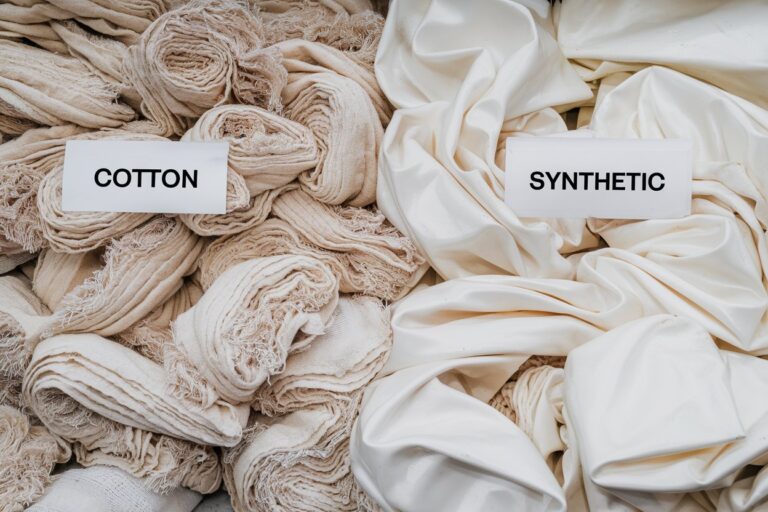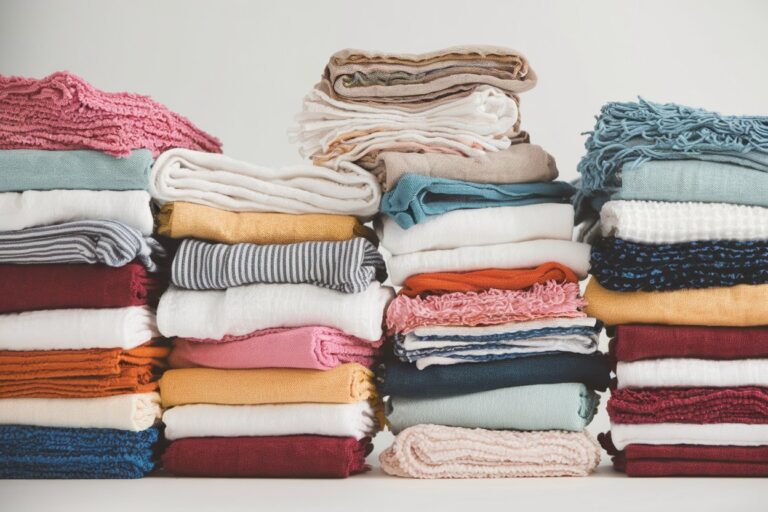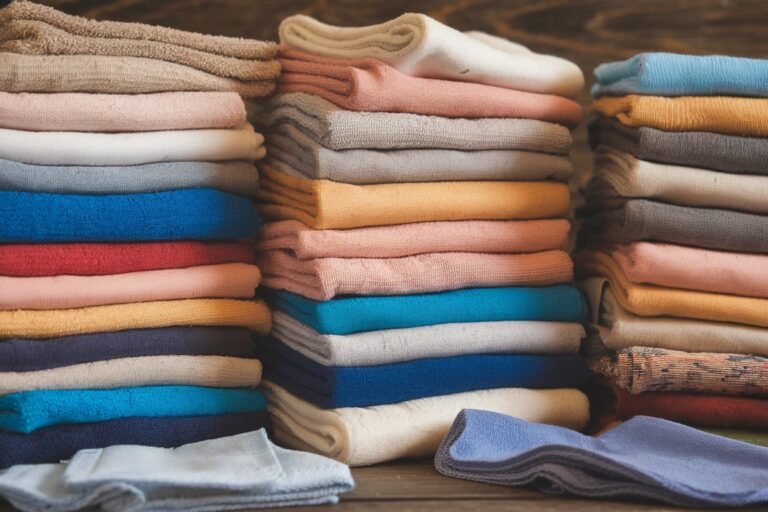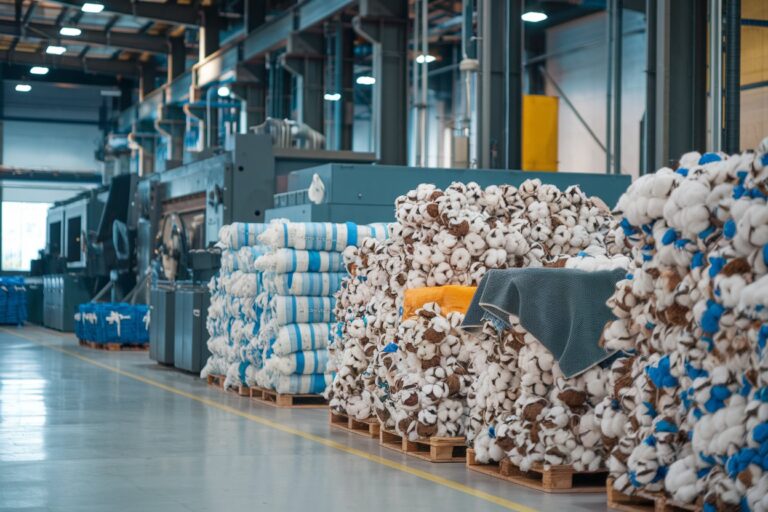Cotton Rags vs. Synthetic Cloths: What’s Better for Effective Cleaning in 2025?
When it comes to effective cleaning, choosing the right material can make all the difference. Both cotton rags and synthetic cloths are widely used, but which one truly stands out? In this guide, we’ll dive into the benefits and drawbacks of cotton rags vs. synthetic cloths, exploring their efficiency, durability, and impact on the environment.
What Are Cotton Rags?
Cotton rags are pieces of cloth made from cotton fibers, often repurposed from old garments, sheets, towels, or other cotton-based fabrics. These rags are widely used for various cleaning tasks, both in domestic and industrial settings, due to their absorbency, softness, and natural material composition. Cotton is a versatile and biodegradable fiber, making it an eco-friendly alternative to synthetic cleaning products.
Unlike synthetic cleaning materials, cotton rags are biodegradable and can be composted or recycled, adding to their appeal for environmentally conscious consumers.
Key Characteristics of Cotton Rags:
- Absorbency:
Cotton is naturally known for its high absorbency, making cotton rags excellent for cleaning up spills, wiping surfaces, and drying. The fabric’s natural fibers have the ability to trap liquids and dirt, which makes it particularly effective in tasks that require moisture absorption. - Softness:
Cotton rags are soft to the touch, which makes them suitable for cleaning delicate surfaces without causing scratches. This is why they are often used for cleaning furniture, cars, and electronic devices like screens or lenses. - Biodegradable:
One of the most significant advantages of cotton rags over synthetic alternatives is that they are biodegradable. As cotton is a natural material, it breaks down over time, reducing its environmental impact compared to synthetic fibers, which can take hundreds of years to decompose. - Durability:
Cotton rags are durable and can be washed and reused multiple times, making them a cost-effective cleaning solution in the long run. They can withstand repeated washes without losing their absorbency or texture. - Versatility:
Cotton rags can be used for a wide range of cleaning applications, from wiping down kitchen counters to polishing surfaces or cleaning windows. The fabric is versatile enough to handle both heavy-duty cleaning tasks and more delicate, intricate jobs.
Types of Cotton Rags:
- T-shirt Rags:
One of the most common types of cotton rags, t-shirt rags are typically made from old cotton shirts. They are often soft and lightweight, ideal for general cleaning tasks such as dusting or wiping down surfaces. - Towel Rags:
Old cotton towels are another excellent source of cotton rags. They tend to be thicker and more absorbent than t-shirt rags, making them suitable for larger cleaning jobs like mopping up spills or cleaning floors. - Sheet Rags:
Sheets made from cotton can be repurposed into rags for cleaning. These rags are often larger in size, making them ideal for cleaning big areas or for tasks that require more surface coverage. - Flannel Rags:
Flannel cotton rags are a great option for more sensitive cleaning tasks, as they are soft yet durable. These are often used for cleaning windows, mirrors, or other delicate surfaces.
| Advantages | Disadvantages |
|---|---|
| Biodegradable and sustainable | May wear out after extensive use |
| Cost-effective | Requires regular washing |
| Non-abrasive on surfaces | Limited to certain cleaning tasks |
What Are Synthetic Cloths?
Synthetic cloths are fabrics made from man-made fibers, often derived from chemical processes that use petroleum-based materials. Unlike natural fibers, such as cotton or wool, synthetic fabrics are not derived from plants or animals. Instead, they are engineered to have specific qualities, making them versatile and highly functional for a range of purposes. Some of the most common synthetic fibers used in cloth manufacturing include polyester, nylon, acrylic, and spandex.
These fabrics have become a staple in many industries, particularly in cleaning, fashion, and performance wear, due to their unique properties that can be tailored to meet various needs.
Common Types of Synthetic Cloths:
- Polyester
Polyester is one of the most widely used synthetic fabrics. It’s durable, resistant to shrinking and stretching, and can be blended with natural fibers like cotton to enhance its functionality. Polyester cloths are commonly used in cleaning applications due to their ability to withstand high wear and tear. - Nylon
Known for its strength and resistance to abrasion, nylon is another popular synthetic fiber. It is commonly used in cleaning cloths designed for heavy-duty tasks, as it can handle intense friction and moisture without wearing out quickly. - Acrylic
Acrylic is often used in cleaning cloths because of its soft texture and ability to trap dust and dirt. It is a synthetic fiber commonly used in high-quality cleaning cloths, especially for delicate surfaces, as it’s gentle while still effective. - Microfiber
One of the most advanced forms of synthetic cloth, microfiber is made of ultra-fine polyester or nylon fibers. These fibers are tightly woven to create a dense, soft cloth that can capture dirt and dust particles far more effectively than traditional cotton cloths. Microfiber cloths are particularly popular for cleaning glass, electronics, and other smooth surfaces due to their streak-free finish.
Key Properties of Synthetic Cloths:
- Durability: Synthetic cloths are typically more durable than natural fibers. They resist wear, tearing, and fading, making them ideal for long-term use in both industrial and household cleaning tasks.
- Water Resistance: Many synthetic fabrics, such as polyester and nylon, have water-resistant properties, allowing them to dry faster and avoid absorbing moisture. This makes synthetic cloths highly efficient for tasks that require quick drying or constant exposure to wet environments.
- Lightweight: Synthetic fibers are generally lightweight, making synthetic cloths easy to handle and store. This feature is especially beneficial in industrial settings where large amounts of cloths may be required.
- Versatility: Synthetic cloths can be manufactured in various textures, from soft and plush to rough and scrubby. This makes them adaptable for different cleaning needs, whether it’s wiping down delicate surfaces or scrubbing away tough stains.
- Streak-Free Finish: Microfiber, in particular, is prized for its ability to leave surfaces streak-free and lint-free, making it a favorite for cleaning glass, mirrors, and electronics. The fine fibers trap particles without leaving behind any residue, which is crucial for achieving a polished, clean look.
- Resistance to Mold and Mildew: Many synthetic fibers are resistant to mold and mildew growth, which makes them ideal for use in damp environments, like kitchens and bathrooms.
Environmental Impact of Synthetic Cloths
While synthetic cloths offer numerous benefits, they do come with some environmental drawbacks. Most synthetic fibers are made from non-renewable resources, particularly petroleum, which contributes to the depletion of natural resources. Additionally, synthetic cloths are not biodegradable and can take hundreds of years to decompose if not properly disposed of.
Another significant concern is the release of microplastics into the environment during washing. When synthetic cloths are laundered, tiny fibers break off and flow into water systems, where they may end up in oceans, rivers, and lakes, posing a threat to aquatic life.
To mitigate these effects, it’s important to properly recycle synthetic materials and reduce their use where possible. Some synthetic cloths, such as those made from recycled plastic bottles, are becoming more environmentally friendly, though their overall sustainability still lags behind natural fibers like cotton.
Cotton Rags vs. Synthetic Cloths: A Detailed Comparison
| Criteria | Cotton Rags | Synthetic Cloths |
|---|---|---|
| Absorbency | Excellent for absorbing spills and liquids | Good but varies by material type |
| Eco-Friendliness | Biodegradable and made from natural materials | Not biodegradable; may release microplastics |
| Durability | Moderate; depends on fabric quality | High; designed for repeated use |
| Surface Safety | Gentle on delicate surfaces | Some textures can scratch certain materials |
| Cost | Affordable and widely available | More expensive but lasts longer |
| Versatility | Suitable for general-purpose cleaning | Ideal for specific cleaning tasks |
Cotton Rags vs. Synthetic Cloths: Key Differences
When it comes to choosing the right material for cleaning, two popular options are cotton rags and synthetic cloths. Each has its own set of benefits and drawbacks, and understanding the differences between cotton rags vs. synthetic cloths can help you make an informed decision for your cleaning needs.
1. Material Composition
The primary difference between cotton rags vs. synthetic cloths lies in their material composition. Cotton rags are made from natural cotton fibers, which are biodegradable and renewable. In contrast, synthetic cloths are typically made from man-made fibers such as polyester, nylon, or rayon, which are derived from petroleum-based products.
Cotton Rags vs. Synthetic Cloths:
Cotton fibers are soft, breathable, and non-toxic, making them ideal for people with allergies or sensitivities to chemicals. Synthetic cloths, on the other hand, often contain chemicals that can cause irritation for some individuals, especially when used for prolonged periods.
2. Absorbency and Moisture Retention
Cotton rags are well-known for their superior absorbency. Cotton fibers naturally absorb moisture, which makes cotton rags highly effective for cleaning up spills, wiping down surfaces, and drying. Synthetic cloths, while absorbent to a certain extent, don’t match cotton rags in moisture retention. Many synthetic cloths are designed to resist absorbing moisture, which can be advantageous for quick-drying tasks but makes them less efficient for deep cleaning jobs.
Cotton Rags vs. Synthetic Cloths:
When cleaning up large spills or wiping off grease and grime, cotton rags tend to work better due to their ability to hold moisture without losing their effectiveness. Synthetic cloths might require more effort to wipe up spills, as they absorb less liquid.
3. Durability and Longevity
Synthetic cloths are often more durable than cotton rags. Due to the nature of their fibers, synthetic cloths tend to last longer and resist wear and tear. They are less likely to break down or fray after multiple washes. Cotton rags, while durable, can lose their shape, shrink, or degrade over time, especially if washed with harsh detergents or exposed to extreme conditions.
Cotton Rags vs. Synthetic Cloths:
For long-term durability and resistance to rough handling, synthetic cloths generally outperform cotton rags. However, cotton rags can still last for a reasonable amount of time if cared for properly, especially when repurposed from old clothing or sheets.
4. Environmental Impact
One of the most significant advantages of cotton rags over synthetic cloths is their environmental impact. Cotton is a natural, biodegradable material, which means cotton rags break down over time and do not contribute to plastic pollution. On the other hand, synthetic cloths, made from petroleum-based materials, take hundreds of years to decompose and contribute to microplastic pollution when washed.
Cotton Rags vs. Synthetic Cloths:
If you’re concerned about environmental sustainability, cotton rags are a much better choice compared to synthetic cloths. By using cotton rags, you reduce waste and contribute to a more eco-friendly cleaning routine. Synthetic cloths, though durable, have a much greater negative environmental impact.
5. Cost-Effectiveness
Cotton rags are often more cost-effective than synthetic cloths, especially in the long run. Since cotton rags are reusable and can be washed multiple times, they provide significant savings over time. Synthetic cloths, while initially affordable, may need to be replaced more often due to wear and tear, especially when subjected to repeated use or aggressive cleaning tasks.
Cotton Rags vs. Synthetic Cloths:
If you’re looking to save money, cotton rags are a better investment. Despite their need for occasional washing and maintenance, cotton rags will last longer than synthetic cloths, which may require frequent replacement.
6. Softness and Sensitivity
Cotton rags are typically softer and gentler on surfaces, making them ideal for cleaning delicate items such as windows, mirrors, or electronic screens. Synthetic cloths, although sometimes soft, can be rougher, and some may scratch delicate surfaces if used improperly.
Cotton Rags vs. Synthetic Cloths:
When cleaning delicate surfaces or polishing furniture, cotton rags are the preferred choice due to their soft texture. Synthetic cloths may not offer the same level of gentleness and could damage sensitive surfaces over time.
Why Choose Cotton Rags for Cleaning?
Cotton rags are an ideal choice for those looking to combine functionality with eco-friendliness. They are cost-effective and perform exceptionally well for general cleaning tasks.
Key Benefits of Cotton Rags:
- Eco-Friendly: Biodegradable and free from harmful chemicals.
- Reusable: Can be washed and reused multiple times.
- Absorbent: Perfect for cleaning up spills quickly.
Why Choose Synthetic Cloths for Cleaning?
Synthetic cloths are designed for durability and specialized tasks. They are a great option for streak-free cleaning on glass or electronics.
Key Benefits of Synthetic Cloths:
- Long-Lasting: Highly durable, making them ideal for heavy use.
- Quick Drying: Dries faster, reducing the risk of bacteria buildup.
- Precision Cleaning: Designed for specific surfaces like screens and glass.
Which Is More Cost-Effective?
| Type | Initial Cost | Long-Term Cost |
|---|---|---|
| Cotton Rags | Low | Moderate (due to wear and washing) |
| Synthetic Cloths | High | Low (due to durability) |
While cotton rags have a lower upfront cost, synthetic cloths often save money over time due to their durability.
Environmental Impact of Cotton Rags vs. Synthetic Cloths
| Factor | Cotton Rags | Synthetic Cloths |
|---|---|---|
| Biodegradability | Fully biodegradable | Non-biodegradable; may persist in the environment |
| Resource Use | Made from natural, often recycled fabrics | Requires petroleum-based resources |
| Microplastic Pollution | No | Yes (during washing and degradation) |
Cotton rags are the clear winner for eco-conscious individuals, as they reduce waste and avoid contributing to microplastic pollution.
FAQs About Cotton Rags vs. Synthetic Cloths
Conclusion
When comparing cotton rags vs. synthetic cloths, the choice largely depends on your priorities. Cotton rags are an eco-friendly, cost-effective solution for general cleaning, while synthetic cloths offer durability and precision for specialized tasks. By understanding the strengths and limitations of each, Al mnwer can help you make an informed decision that aligns with your cleaning needs and environmental values.







